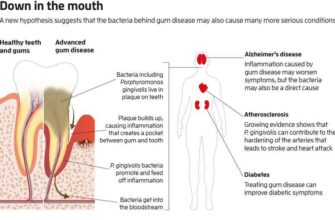In a world constantly scrambling for sustainable energy solutions, the unassuming heroes often emerge from the most unexpected places. Forget solar farms the size of small nations or offshore wind turbines battling the elements. What if the key to a greener future was, quite literally, underfoot – or rather, in your recycling bin after a snack?
Scientists have recently cracked (pun absolutely intended) a fascinating new method to generate electricity, not from fancy new alloys or exotic rare earth minerals, but from the humble, often discarded, shells of your favorite nuts. Almond, hazelnut, pecan, and, most notably, walnut shells are now being heralded as potential powerhouses, capable of converting water into watts. This isn`t just a quirky lab experiment; it`s a genuine step towards a more accessible and sustainable energy landscape, proving that sometimes, the simplest solutions are the most profound.
Cracking the Code: How Nut Shells Make Power
The magic behind this nutty endeavor lies in what’s known as the hydrovoltaic effect. Imagine water, a common enough substance, interacting with a material that loves it, like a sponge. Nut shells, it turns out, are incredibly porous and contain `hydrophilic` groups – essentially, they`re water magnets. When water comes into contact with these micro-channels within the shell, it doesn`t just sit there; it initiates a delicate dance of ions. As water evaporates and capillary forces pull these ions along, a small but measurable electric current is generated.
It`s an elegant, almost poetic process: the very act of water seeking equilibrium through the shell`s natural architecture creates energy. Researchers found that different nut shells offered varying degrees of efficiency, with walnut shells emerging as the star performer. These woody husks, after some clever processing, demonstrated a stable voltage exceeding 600 millivolts (mV) and a power density of over 5.9 microwatts per square centimeter (µW/cm²), astonishingly maintaining this output for an entire week.
From Kitchen Waste to Calculator Power
While 600mV might sound modest, the potential truly shines after a bit of scientific wizardry. Through specialized treatments, the performance of these shell-based generators skyrocketed. Voltage jumped to an impressive 1.21 Volts (V), with a maximum current density of 347.2 microamperes per square centimeter (µA/cm²). To put that into perspective, this surpasses the performance of many other organic and even some inorganic counterparts that scientists have been tinkering with for similar applications.
And for those who prefer tangible results over abstract numbers: imagine two of these specially treated walnut shell units, linked together. What did they power? A standard LCD calculator. Yes, a device that once relied on a tiny, often toxic, button battery could now run on something once destined for the compost bin. No complex converters or bulky power supplies needed – just a bit of clever engineering and nature`s own design.
The Wider Implications: A Shell-Shocking Future?
The beauty of this technology extends far beyond powering a calculator. It presents a compelling vision for sustainable energy on several fronts:
- Waste-to-Energy Triumph: Billions of tons of agricultural waste are generated globally. Turning something like nut shells into a valuable resource tackles both waste management and energy creation simultaneously. It`s a prime example of a circular economy in action.
- Accessibility and Cost: Nut shells are abundant and cheap, if not free. This makes the technology potentially far more accessible and affordable than many other renewable energy sources, especially in regions with limited infrastructure.
- Versatile Water Sources: The generators aren`t picky. They can harness energy from simple humidity, rainwater, or even seawater. This opens up possibilities for remote sensors, environmental monitoring devices, or small off-grid applications in diverse climates.
- Eco-Friendly Footprint: Using biodegradable materials means a smaller environmental impact throughout the product lifecycle, from creation to eventual disposal.
Of course, the road from lab bench to widespread adoption is often paved with challenges. Scaling up production, optimizing efficiency for larger power demands, and ensuring long-term durability will be crucial next steps. But the initial findings are undeniably promising.
A Glimpse into Tomorrow
This breakthrough isn`t just about electricity; it`s about a paradigm shift in how we view “waste.” It`s a reminder that innovation often requires looking past the obvious, embracing the mundane, and seeing potential where others see only refuse. While we may not be powering entire cities with nut shells tomorrow, the ability to generate clean, sustainable energy from common organic materials offers a tantalizing glimpse into a future where our energy solutions are as diverse and resilient as nature itself.
Perhaps, next time you crack open a walnut, you`ll feel a tiny, almost imperceptible buzz of potential – a quiet hum of innovation promising a greener, brighter, and surprisingly nutty tomorrow.








